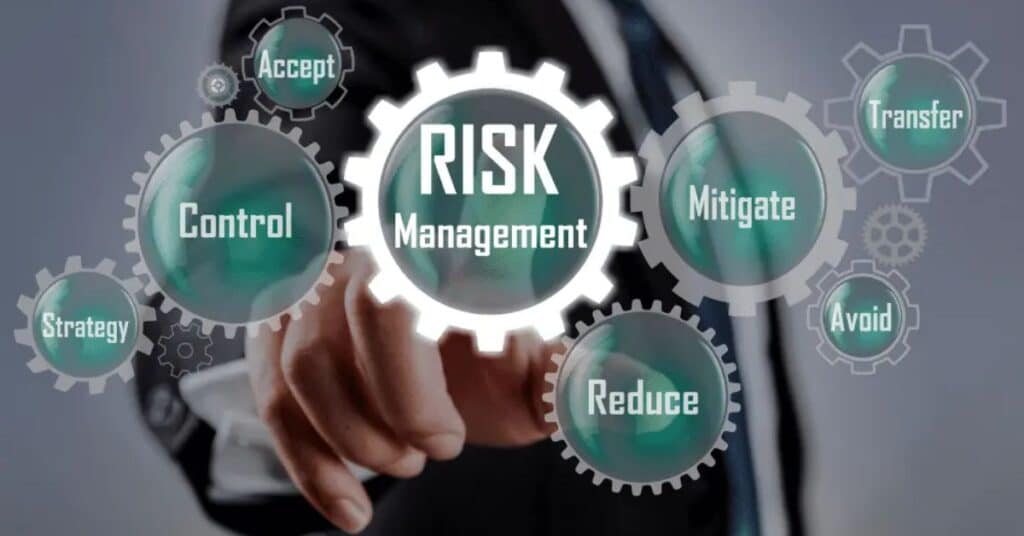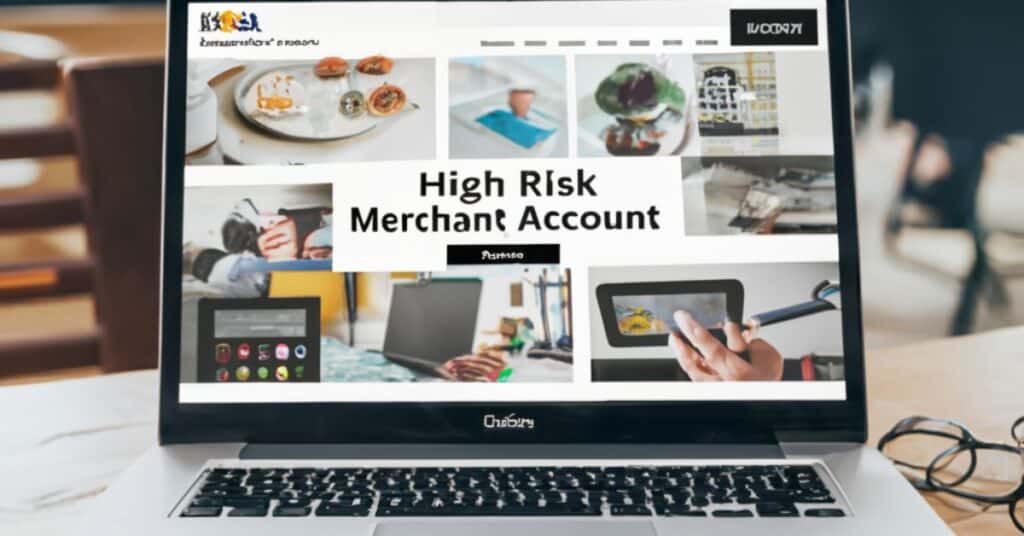At highriskpay.com, a high risk merchant account is a specialized payment processing service designed for businesses considered high risk, enabling them to accept credit and debit card payments.
If you are facing challenges, a high risk merchant account might be the solution. This guide covers all aspects of high risk merchant accounts, from their definition to how they are assessed, offering insights into what to anticipate when using one.
What is a High-Risk Merchant Account?
A high-risk merchant account is a specialized payment processing service designed for businesses considered high-risk due to various factors such as high chargeback rates, operating in industries prone to fraud, or having a poor credit history.
These accounts enable such businesses to accept credit and debit card payments from customers, providing them with a crucial avenue for conducting transactions in today’s cashless society.
High-risk merchant accounts are essential for businesses that may not qualify for traditional merchant accounts due to their risk profile. While they offer the same benefits as traditional accounts, such as enabling businesses to accept card payments, they often come with certain conditions and higher fees to mitigate the higher risk associated with these businesses.
How are Businesses Determined to Be High-Risk?

Businesses are often labeled high risk based on several key factors. These may include the industry in which the business operates, its credit history, the length of time it has been in business, and its marketing strategies. Each of these factors can contribute to the overall risk assessment of the business by merchant account providers.
Certain industries are commonly classified as high risk due to their nature. These industries include online sales, gambling, adult entertainment, and electronic cigarettes. Businesses operating in these industries often face higher chargeback rates or reputational risks, leading to their classification as high-risk by merchant account providers.
In addition to industry classification, other factors such as newness of the business, past credit problems, or the nature of the services offered can also contribute to a business being labeled high-risk. It is important for businesses to be aware of these factors and how they may impact their ability to obtain a merchant account.
Industries Considered High-Risk
Online sales, including e-commerce sites, eBay sellers, and Amazon stores, are often considered high risk due to the nature of online transactions and the potential for higher chargeback rates.
Businesses involved in online gambling, casinos, or sports betting are typically classified as high-risk due to the inherent risk of fraud and the potential for chargebacks.
Adult stores, escort services, and other businesses in the adult entertainment industry are often labeled as high-risk due to reputational risks and the potential for chargebacks. Here are some examples:
Online Sales:
Industries that heavily rely on online transactions, such as e-commerce sites, eBay sellers, and Amazon stores, are often classified as high risk due to the increased potential for chargebacks and fraud.
Gambling:
Businesses involved in online gambling, casinos, or sports betting are typically considered high-risk due to the inherent risk of fraud and the likelihood of chargebacks.
Adult Entertainment:
This industry includes adult stores, escort services, and other businesses related to adult entertainment, which are often labeled high-risk due to reputational risks and the potential for chargebacks.
Electronic Cigarettes:
Sellers of e-cigarettes and related products face regulatory challenges and potential chargeback risks, leading to their classification as high-risk.
Other Industries:
Certain industries such as travel, nutraceuticals, and subscription services are also often classified as high-risk due to various factors such as high chargeback rates or regulatory scrutiny.
Also read: WHAT IS THE FACEBOOKTEC TRANSACTION ON YOUR BANK STATEMENT?
Benefits and Drawbacks of High-Risk Merchant Accounts
High-risk merchant accounts offer advantages and disadvantages, so it’s crucial to weigh these factors before opting for one.
Benefits of High-Risk Merchant Accounts
High-risk merchant accounts provide businesses with the ability to accept credit and debit card payments, which can lead to increased sales and improved customer satisfaction.
- Access to Payment Processing Services: High-risk merchant accounts ensure that businesses in high-risk industries can still access payment processing services, even if traditional providers decline them.
- Higher Approval Rates: These accounts often have higher approval rates for businesses with bad credit or other risk factors, giving them a better chance of obtaining a merchant account.
- Chargeback Management: High-risk merchant account providers typically offer chargeback management solutions to help businesses minimize the impact of chargebacks on their operations.
- Ability to Accept Card Payments: These accounts allow businesses to offer convenient payment options to their customers, which can lead to increased sales and customer satisfaction.
- Access to Specialized Providers: High-risk merchant account providers specialize in serving businesses that are considered high-risk, ensuring that these businesses have access to the payment processing services they need.
Drawbacks of High-Risk Merchant Accounts
While high-risk merchant accounts offer several benefits, they also come with drawbacks that businesses need to consider.
- Higher Fees and Charges: High-risk merchant accounts typically have higher transaction fees, periodic fees, and incidental charges compared to traditional accounts, which can impact a business’s bottom line.
- Rolling Reserves: Some high-risk merchant account providers may require a rolling reserve, where a percentage of the business’s gross sales is held back to cover potential chargebacks or losses, affecting cash flow.
- Limited Options: Businesses with high-risk merchant accounts may have limited options for payment processors, as not all providers are willing to work with high-risk businesses, limiting choices.
- Potential for Cash Flow Issues: Due to higher fees and rolling reserves, businesses using high-risk merchant accounts may experience cash flow challenges, especially when a significant portion of their sales is withheld.
- Higher Risk of Account Closure: High-risk merchant accounts are more susceptible to account closure by providers due to chargebacks or other risk factors, potentially disrupting payment processing services for businesses.
Finding the Right High-Risk Merchant Account Provider

Finding the right high risk merchant account provider can be challenging, but it is crucial for businesses in industries like gaming, CBD, or adult entertainment. Here are seven key factors to consider when selecting a provider:
Industry Experience: Look for providers with a proven track record in serving high risk businesses. Their experience can help you navigate the complexities of payment processing.
Compliance and Security: Ensure the provider complies with all relevant regulations and offers robust security measures to protect your transactions.
Chargeback Management: High-risk businesses often face higher chargeback rates. Choose a provider that offers effective chargeback management tools and strategies.
Processing Fees: Compare processing fees from different providers to find a balance between affordability and quality of service.
Customer Support: A responsive and knowledgeable customer support team is essential for resolving issues quickly and keeping your business running smoothly.
Integration Options: Consider the provider’s compatibility with your existing systems and the ease of integration to minimize disruptions to your operations.
Flexibility and Scalability: Choose a provider that can accommodate your business’s growth and adapt to changes in your industry.
By carefully evaluating these factors, you can find a high-risk merchant account provider that meets your business’s needs and helps you manage your payment processing effectively.
Understanding Fees and Charges
Understanding fees and charges is crucial when considering a high-risk merchant account. Here’s a brief guide to help you navigate these aspects:
Transaction Fees: These are charges for each credit or debit card transaction processed through your account. They can be a flat rate or a percentage of the transaction amount.
Periodic Fees: These are recurring charges billed regularly, such as monthly or annually. They may include account maintenance fees, statement fees, or gateway fees.
Incidental Charges: These are additional fees that may be incurred for specific services or situations, such as chargeback fees, retrieval request fees, or settlement fees.
Rolling Reserves: Some providers may require a rolling reserve, where a percentage of your gross sales is held back to cover potential chargebacks or losses.
Chargeback Protection: Providers may offer chargeback management solutions to help minimize the impact of chargebacks on your business.
By understanding these fees and charges, you can make informed decisions when selecting a high-risk merchant account provider.
Rolling Reserves and Chargeback Protection

Rolling reserves and chargeback protection are crucial aspects of high-risk merchant accounts. Here’s a simple breakdown of what they entail:
Rolling reserves are funds that high-risk merchant account providers hold back from a business’s sales to cover potential chargebacks or losses. This reserve is usually a percentage of sales and is held for a specified period, often around 90 days. Its purpose is to protect the provider from the higher chargeback rates common in high-risk industries.
Chargeback protection refers to the tools and resources that providers offer to help businesses minimize the impact of chargebacks. These measures can include dispute assistance for invalid chargebacks and tools to prevent chargebacks from happening. Some providers may also offer insurance or other forms of protection against chargebacks. Understanding these terms is crucial for businesses to manage their cash flow and protect themselves from risks associated with card payments.
Application and Approval Process
The application and approval process for a high-risk merchant account can vary depending on the provider. Here’s an overview of the general process:
- Research and compare providers to find one that meets your business needs.
- Gather the required documentation, such as business licenses, financial statements, and identification documents.
- Complete the application form provided by the chosen provider and submit it along with the required documentation.
- The provider will review your application and assess the level of risk associated with your business, which may include credit checks, background checks, and industry analysis.
- You will receive a notification regarding the approval or denial of your application.
- If approved, you can proceed with setting up the account and integrating it into your payment processing systems.
- Work with the provider to set up your high-risk merchant account, including configuring payment gateways, APIs, or any other necessary integrations.
- Once the account is set up, you can start accepting credit and debit card payments from your customers.
- The duration of the application and approval process can vary depending on the provider and the complexity of your business.
- Some providers offer quick approvals within 24 to 48 hours, while others may require more time for underwriting and review.
Tips for Success with a High-Risk Merchant Account
Running a successful high-risk merchant account requires careful attention to detail and proactive management. Here are some tips to help you make the most of your account:
- Implement fraud prevention measures to protect your business from fraudulent transactions.
- Provide excellent customer service to reduce the risk of chargebacks.
- Monitor your chargeback ratios and take proactive steps to reduce them.
- Stay compliant with industry regulations to avoid penalties and fines.
- Review and reconcile your statements regularly to ensure accuracy.
- Maintain financial stability to avoid disruptions in payment processing services.
- Consider alternative payment options to offer your customers more choices.
- Stay informed about industry trends and developments to adapt your strategies accordingly.
- Seek advice from experts or consultants to help you navigate the challenges of high-risk merchant accounts.
Maintaining financial stability is crucial for success with a high-risk merchant account. Ensure healthy cash flow and financial stability to avoid disruptions in payment processing services.
By following these tips, you can increase your chances of success with a high-risk merchant account and minimize potential risks.
Also Read: WHAT IS THE ACI CHRCAP TRANSACTION ON YOUR BANK STATEMENT?
High-Risk Merchant Account Alternatives
When a high-risk merchant account is not the right fit, several alternatives can be considered to process payments. Here are some options to explore:
Aggregators: Services like PayPal and Stripe offer payment processing to various businesses, including some high-risk industries, though they may have limitations and restrictions.
Offshore Merchant Accounts: These are provided by banks or processors in offshore jurisdictions and may offer different terms, but come with additional considerations like currency conversion and regulatory compliance.
Third-Party Processors: Some businesses opt for third-party processors specializing in specific industries, offering tailored solutions and a deeper understanding of the challenges faced by high-risk businesses.
Digital Wallets: Services like Apple Pay, Google Pay, and Amazon Pay offer secure payment processing and can be viable alternatives for some businesses.
Cryptocurrency Payments: Accepting payments in cryptocurrencies like Bitcoin can provide an alternative payment method that is secure and can appeal to tech-savvy customers.
Choosing the right alternative to a high-risk merchant account depends on the specific needs and risk tolerance of the business. Each option has its pros and cons, so it’s important to research and compare to find the best fit.
How Do High-risk Accounts Differ from Regular Accounts for Payment Processors?

High-risk accounts differ from regular accounts for payment processors in several key ways. These differences can impact the fees, approval process, and terms of the account. Here’s a breakdown:
Approval Process: High-risk accounts often undergo stricter scrutiny and may require more documentation for approval due to the increased risk associated with the business.
Fees: High-risk accounts typically have higher fees compared to regular accounts to offset the increased risk for the payment processor.
Reserve Requirements: Payment processors may impose a rolling reserve on high-risk accounts, withholding a percentage of sales to cover potential chargebacks or losses.
Chargeback Management: Payment processors for high-risk accounts may offer additional chargeback management tools and services to mitigate the risks associated with chargebacks.
Terms and Conditions: The terms and conditions of high-risk accounts may differ from regular accounts, including longer contract lengths and more stringent cancellation policies.
Frequently Asked Questions
What types of businesses do you accept?
Highriskpay.com accepts various types of businesses, including high-risk, retail, mail/telephone orders, and more. They cater to a wide range of industries to meet diverse merchant needs.
How long does it take to get approved?
Approval with Highriskpay.com typically takes 24-48 hours, offering quick setup and immediate shipment upon approval. This fast approval process ensures businesses can start processing payments promptly.
What are the advantages of accepting credit cards online?
Accepting credit cards online provides several advantages, including quick transaction processing that improves cash flow. It also expands the customer base, leading to increased sales and customer satisfaction due to the convenience of online shopping.
What if I have bad credit?
Even if you have bad credit, Highriskpay.com approves accounts regardless of credit history. They boast the highest approval rate in the industry, ensuring that businesses with bad credit can still access payment processing services.
Do I need a bank account to accept credit cards?
Yes, you need a bank account to accept credit cards. A business account is required to receive funds from customers. Sole proprietors can use a personal bank account for this purpose.
What is a chargeback?
A chargeback occurs when a cardholder disputes a transaction. If found fraudulent, the issuing bank refunds the amount to the cardholder, which can impact the merchant’s revenue.
How do I avoid chargebacks?
To avoid chargebacks, make sure your business name matches the site, provide an “800” number for customer service, offer refunds if necessary, and ensure excellent customer service to prevent disputes.
What is your Advanced Commerce Technologies Online Payment solution?
Highriskpay.com’s Advanced Commerce Technologies Online Payment solution allows real-time capture of check and credit card payments in online e-commerce. It includes features like web links, virtual terminals, and audit trails for secure and fast funds transfer.
What are the requirements to open a merchant account?
To open a merchant account with Highriskpay.com, you need a U.S. business checking account, a valid photo ID, a business license, a current bank statement, and previous merchant statements. Approval takes 24-48 hours with no setup fees.
How will I receive my money?
Sales processed through Highriskpay.com are deposited directly into your checking account, with funds available within two business days. This ensures quick access to your revenue for improved cash flow.
What is the interchange fee?
The interchange fee is a fee assessed by Visa and MasterCard for each payment transaction. This fee is passed on to the card-issuing financial institution, which then credits the merchant’s account.
Why choose Highriskpay.com for a merchant account?
Highriskpay.com is a top choice for a merchant account due to its simple and affordable credit card processing solutions. They offer quick approvals within 24-48 hours, making them ideal for businesses at a higher risk of chargebacks.
Conclusion
Highriskpay.com provides high-risk merchant accounts, offering quick approval within 24-48 hours. They cater to various business types, including high-risk, retail, and mail/telephone orders. Accepting credit cards online through Highriskpay.com can improve cash flow, expand customer reach, and enhance customer satisfaction due to the convenience of online transactions.
Even if you have bad credit, Highriskpay.com approves accounts regardless of credit history, boasting the highest approval rate in the industry. Their Advanced Commerce Technologies Online Payment solution enables real time capture of check and credit card payments in online e-commerce.
With Highriskpay.com, you can expect quick approval, seamless payment processing, and reliable customer support, making it a top choice for businesses seeking high-risk merchant accounts.

Alexander, our distinguished author, boasts 6 years of rich experience in finance. His profound insights and adeptness in navigating financial intricacies make him a valuable asset, ensuring content that resonates with expertise.







